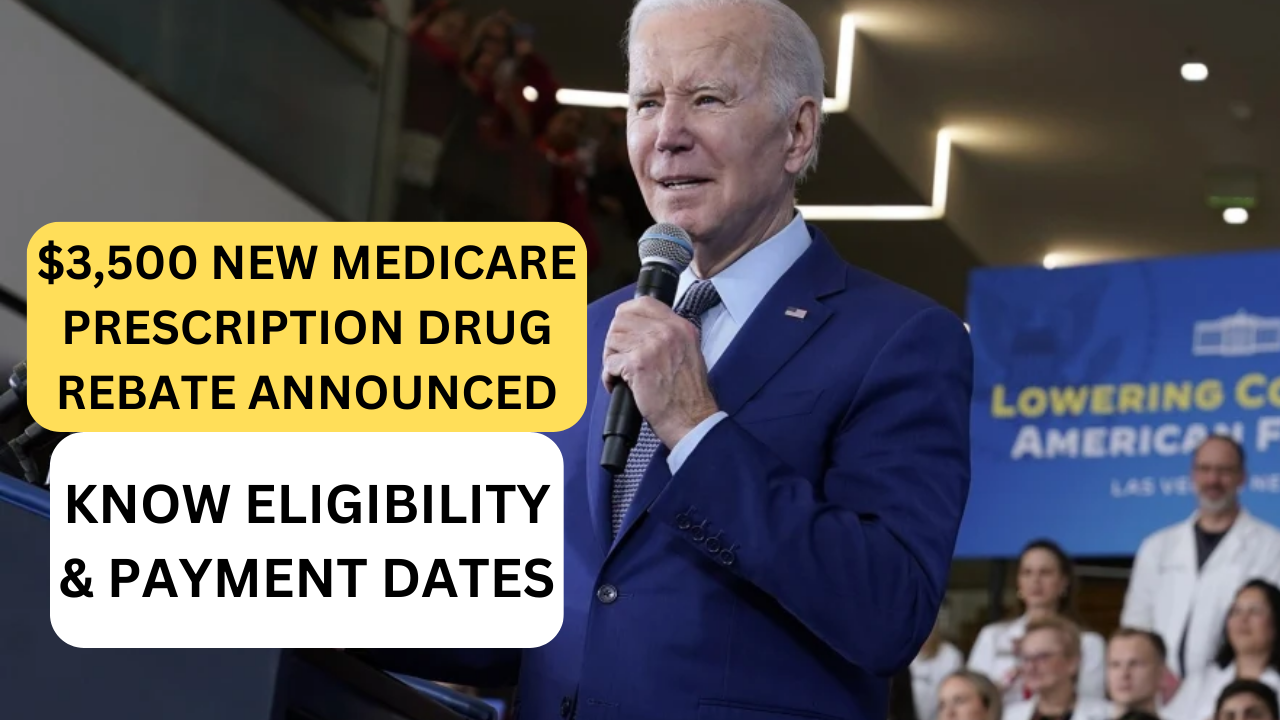The 2022 Inflation Reduction Act comprises several measures aimed at containing inflation, such as lowering the cost of prescription drugs, boosting domestic energy production, and promoting sustainable energy. Medicare participants need to be aware of $3,500 New Medicare prescription drug refund has been introduced. Before the new law takes effect, the US Department of Health and Human Services has formally revealed the list of medications it would affect.
Part B Medicare enrollees may be eligible for a $3,500 rebate for specific medication needs as a result of the total savings. Part B covers medical supplies, ambulance services, mental health, primary care, preventative, and medically necessary care. The public will have access to the list of prescription medications that qualify for a partial reimbursement under the new Medicare Prescription Drug Inflation Rebate Programme beginning on April 1st, 2023.
$3,500 New Medicare Prescription Drug Rebate Announced
America’s government-run health insurance programme is called Medicare. Social Security applications can be filed at age 62, while Medicare needs you to be at least 65 years old to apply. Medicare is restricted to individuals with qualifying disabilities prior to reaching 65 years of age. HHS Secretary Xavier Becerra applauded the plan and stated in a statement that Americans shouldn’t have to pay twice or three times as much for the same prescription drugs as those in other countries.

We are implementing the results of our administration’s commitment to lowering health care costs by curbing the outrageous expenditure of quickly rising prescription medication prices with the adoption of President Biden’s new lower cost prescription drug bill. Pharmaceutical companies are currently obligated to return money to the Medicare Trust Fund if their price increases exceed inflation.
Also Read:
- $1500 Payment for Millions of Americans
- $500 Monthly Direct Stimulus Checks
- $5,200 Stimulus Check Coming
Medicare Prescription Drugs Covered
This list consists of 41 prescription drugs that will reimburse users between $1 and $3,575 each dosage, depending on your entire Medicare coverage (which is divided into four sections, with sections C and D administered by your selected private insurance and all of them regulated and protected by the state). It is anticipated that 763,700 Medicare beneficiaries will benefit from the new law as at least one of the specified medicines is utilised by them. The HHS secretary announced that pharmaceutical companies will now be obliged to reimburse Medicare directly for particular prescriptions if their costs climb faster than inflation, in keeping with the Medicare Prescription Drug Inflation Rebate programme, which has been in effect for years without regulation.
- This bill’s negotiations have been challenging and continue to be so. When the Biden Administration first announced its list of approved prescription medications in December, it had 48 different medications. The ten prescription drugs that were covered by the Part D Medicare programme were Eliquis, Jardiance, Xarelto, Januvia, Farxiga, Entresto, Enbrel, Imbruvica, Stelara, and Fiasp/NovoLog. Counteroffers were made in February to lower the rebates when the final price was revealed.
- Beginning in 2022, pharmaceutical companies that increased the cost of particular Part D medications were required to reimburse Medicare. The same procedure was started for Part B medications in January 2023. Co-pay levels for Part B approved drugs were lowered in April of last year, and it is expected that the list will be totally negotiated beginning in 2024. The Centres for Medicare & Medicaid Services intends to send the first bills for the rebates to pharmaceutical companies in 2025; the new process will be fully operational by 2026.
Is it advisable to receive Social Security Before Medicare?
- American workers are eligible to receive Social Security benefits when they age 62 if they have paid enough payroll taxes. However, that does not mean that they must give in at 62 years old. Not only that, but financially, it might not be the best plan. Social Security benefits will be reduced by 30% if you apply when you are sixty-two. It’s important to determine if your assets and income will suffice to pay for retirement expenses.
- This will undoubtedly depend on your personal situation, your health, and your financial situation. If you file when you are sixty-two, you will not get all of your benefits since you will get significantly less. More and more elderly people are choosing to apply for Social Security and Medicare at the same time. However, as a retiree, this will mean having to give up some of your monthly benefits. Indeed, a significant number of Americans have their Part B premiums paid automatically. But you’ll receive significantly less from Social Security. in order for you to enrol in Medicare as soon as you turn 65. If you want to file at age 70 and receive a higher retirement income, do so.
My Homepage – Covid-Watch.Org
